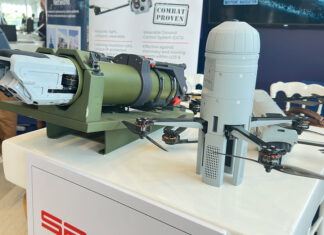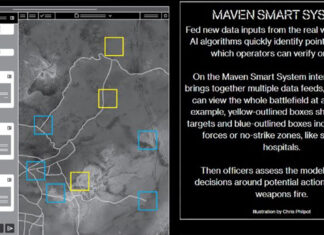The US Army has demonstrated a new software framework called Ozone, that supports rapid prototyping and rapid integration of real-time intelligence and operational data, providing commanders with enhanced situational understanding. Customers will use ‘Apps’ to pull these advanced information products over the pentagon’s secure web, to integrate the data into existing applications or new ones. This capability is part of a prototype of an Operations/Intelligence Convergence Army initiative to fuse real-time intelligence with combat operational data.
The key software product for OPS/Intel is the Ozone widget framework, developed for the Defense Information Systems Agency (DISA). This government-owned product enables rapid third-party application or “apps” development to produce web-based capabilities for Soldiers and commanders. “This common framework is crucial to OPS/Intel convergence,” said Maj. Ryan Howell, Assistant Program Manager, for the Project Manager Mission Command (PM MC). “It provides the commanders with a complete Common Operating Picture (COP), viewable through apps that provide three-dimensional views for operational and intelligence awareness for ground and air reporting, field artillery commands, logistics, alerts and incident reporting.” To view these apps, users employ Command Web, the web-enabled environment that provides COP data and collaborative tools for those who do not possess thick client (full-featured computer) hardware capabilities. Developers can create the apps on the common framework, similar to how apps are developed on smartphones.
The first phase of OPS/Intel convergence was demonstrated by establishing a collaborative computing environment combining the Distributed Common Ground System-Army (DCGS-A), the Army’s primary system for processing and disseminating collection elements of reconnaissance, surveillance and intelligence operations with mission command systems, delivering real-time shared situational understanding.
This OPS/Intel was demonstrated by Soldiers at the recent Network Integration Evaluation, (NIE, 12.2) held at White Sands Missile Range, N.M. The NIEs are semi-annual field exercises designed to rapidly integrate and mature the Army’s tactical communications network. Howell’s team also provided a successful demonstration of OPS/Intel to U.S. Army staff at the Pentagon, which in addition to showing how the common framework could run apps, illustrated potential cost savings for the Army.

The future evolution of command post systems will mature into primary service being delivered by Ozone applications, across operations, intelligence, airspace management, fires, sustainment and others, with minimal robust stand-alone systems to support disconnected, intermittent and latent requirements. “This feature will provide users with enhanced situational awareness because they will be able to seamlessly operate the apps should a network outage occur,” said Howell.
The projects are part of the Army’s Command Post Computing Environment (CP CE) managed by the Program Executive Office Command Control Communications-Tactical (PEO-C3T).





















